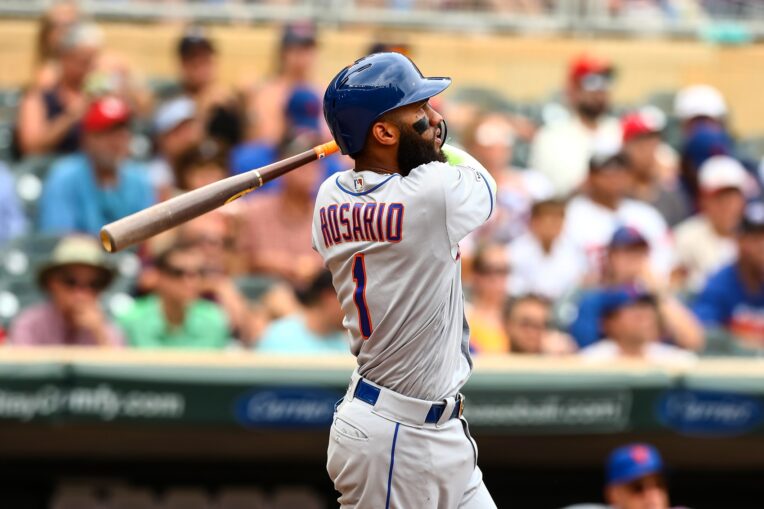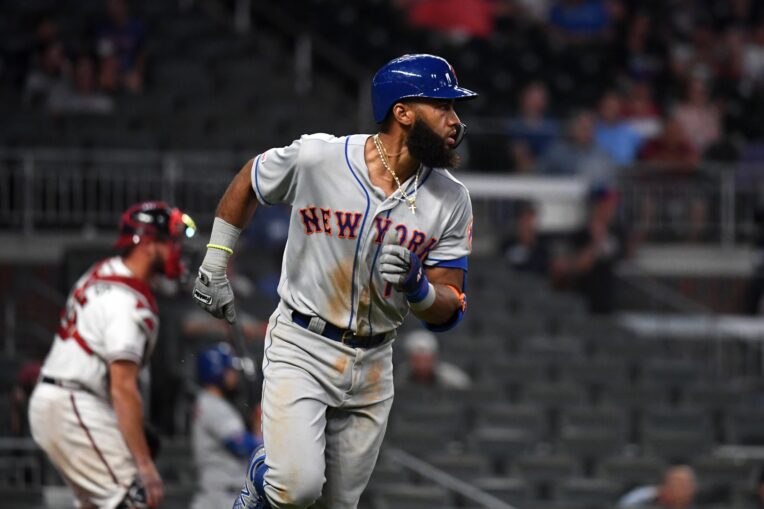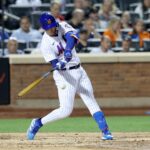
Although the New York Mets’ 2019 campaign didn’t end in a trip to the playoffs, there were a number of positive things to take away from the regular season. One of those pleasant things was the progress shortstop Amed Rosario showed from the first half to the second half.
The 23-year-old got off to a slow start in March/April, but showed some encouraging signs of a breakout eventually coming. We had to wait a few months for the breakout to actually happen, but it was almost as if a switch got flipped once the calendar turned to July.
After posting a .260/.299/.414 line with an 88 wRC+ through 359 first-half plate appearances, his final 299 trips to the plate following the All-Star break resulted in a .319/.351/.453 triple slash, which helped power him to a 114 wRC+. What’s interesting here, though, is that a number of Rosario’s peripherals don’t match up when comparing them to the results he experienced.
Check out how his batted-ball profile changed from one half to the next:

Despite the negative shift that went on in the majority of the above categories, Rosario still saw his BABIP improve from .313 to .363 between these two time periods. So maybe he encountered a bit of good fortune along the way, but it also helped balance out the tough luck he experienced throughout the first half when looking at the rest of his profile.
While Rosario’s walk rate slightly decreased from the first half (5.3%) to the second half (4.0%), it was his strikeout rate that made a noticeable improvement (22.2% to 15.1%). The key to this, of course, is an improvement in some of his plate-discipline numbers, and it lies in the execution of his approach. Like with most decreases in strikeout rate, this was also accompanied with a 2.5-percentage-point decrease in swinging-strike rate, but it’s not because Rosario because less aggressive at the plate. It was actually the opposite — he became slightly more aggressive. Here’s a look at how his chase rate, swing rate on strikes, and the corresponding contact rates changed before and after the midsummer classic:

Rosario put together one of the league’s highest swing rates, even though his season-long chase rate of 38.1% was a career-low mark. He at least paired it with a 71.8% swing rate on strikes, which is a career-best mark and an improvement for the second consecutive year. Purely making more contact is what helped the shortstop enjoy the best overall stretch of his short MLB career because of what else accompanied it.
His 92.0% contact rate on strikes in the second half was among the 20 highest in baseball, and it was also the highest mark among qualified Mets hitters. Even with the decreased hard contact from the first half to the second half, those numbers were all better than his single-season career-high mark heading into 2019, which was 27.7% in 2018.
Although his aggressiveness didn’t change much between these two time periods, Rosario did find more success in offering at pitches. When combined with better overall quality-of-contact numbers, it’s not surprising that he saw more success despite negative regression in other areas of his batted-ball profile.
When looking at how he performed against certain pitches this past year, Rosario saw an overall decrease in his performance against curveballs (94 to 53 wRC+), changeups (120 to 46), and cutters (74 to 56). There were slight improvements against four-seamers (149 to 163) and sinkers (103 to 119), but his increased performance against sliders stands out (13 wRC+ in ’18, 73 wRC+ in ’19).
That was the second-most used pitch by opposing hurlers against Rosario for the second straight year, and the overall usage rate for that offering went from 20.2% in 2018 to 23.7% in 2019. It’s good to see his performance against four-seamers continue to increase while also having success against a breaking pitch hurlers seem to use frequently against him, even if there wasn’t a ton of growth against other pitches.
As just a 23-year-old, Rosario has shown significant development through his first two-plus seasons as a big leaguer. It’s nice to see that while his approach continues inching in the right direction, he took bigger strides in the pure execution of his approach, which has helped him continue to be viewed as an important part of the Mets’ immediate future in some way.
















